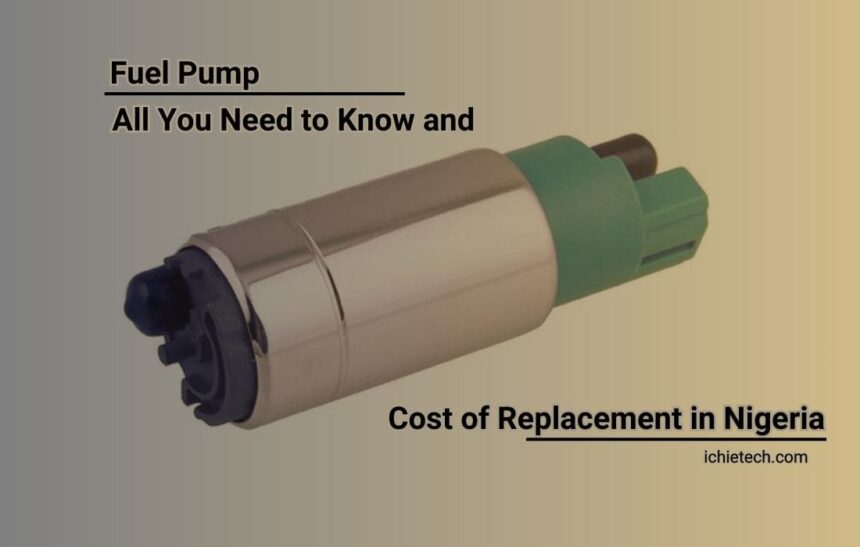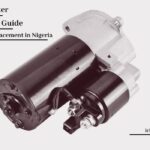Fuel pumps play a crucial role in the functioning of a vehicle’s engine by delivering the required fuel from the tank to the engine. Understanding the basics of a fuel pump and its maintenance is essential for every vehicle owner in Nigeria. In this article, we will delve into the details of fuel pumps, discuss common signs of a faulty fuel pump, explore the factors affecting its lifespan, and provide insights into the cost of fuel pump replacement in Nigeria.
What is a Fuel Pump?
A fuel pump, in simple terms, is a must-have component of a vehicle’s fuel delivery system. Its primary purpose is to pump fuel from the fuel tank to the engine. Fuel pumps come in various types, but the most common ones used in vehicles are mechanical fuel pumps and electric fuel pumps.
Mechanical fuel pumps, commonly found in older vehicles, rely on the engine’s motion to pump fuel. They feature a lever and diaphragm mechanism that creates a suction effect to draw fuel into the engine.
On the other hand, electric fuel pumps are prevalent in modern vehicles. They utilize an electric motor to deliver fuel under high pressure to the engine. Electric fuel pumps are generally more efficient and provide better performance compared to their mechanical counterparts. Additionally, they are capable of maintaining a consistent fuel supply even under demanding conditions.
Signs of a Faulty Fuel Pump
Identifying the signs of a failing fuel pump is crucial to prevent unexpected breakdowns and costly repairs. Some common symptoms of a faulty fuel pump include;
- Engine sputtering
- Loss of power
- Difficulty starting the engine
- Frequent stalling
These issues arise due to inadequate fuel pressure, irregular fuel flow, or complete fuel delivery failure. If you notice any of these signs, it is essential to have your fuel pump inspected and diagnosed by a qualified mechanic in Nigeria. Timely detection of a failing fuel pump can save you from more extensive damage to the engine and potential safety hazards.
Factors Affecting Fuel Pump Lifespan
Several factors can impact the lifespan of a fuel pump. The fuel quality and the presence of contaminants can significantly affect its performance and longevity. It is crucial to use high-quality fuel from reputable fuel stations and consider using fuel additives to maintain a clean fuel system.
Regular maintenance and care are also essential for extending the life of a fuel pump. Ensuring the fuel tank is kept above a quarter full prevents the pump from running dry, reducing the risk of damage. Additionally, regular inspection and replacement of fuel filters help prevent clogs and maintain fuel flow.
Furthermore, driving habits and conditions can influence the lifespan of a fuel pump. Frequent driving in heavy traffic or dusty environments may put more strain on the pump, potentially shortening its lifespan. Practising smooth acceleration and avoiding excessive idling can help alleviate stress on the fuel pump.
Cost of Fuel Pump Replacement in Nigeria
The cost of fuel pump replacement in Nigeria can vary depending on several factors.
The average price of a fuel pump replacement ranges from [ ₦30,000 – ₦70,000]
However, this cost can differ based on factors such as the make and model of the vehicle, the type of fuel pump required, labour charges, and the availability of spare parts.
Vehicles from different manufacturers may have different fuel pump designs and installation details, resulting in differences in replacement costs. Electric fuel pumps are generally more expensive than mechanical ones due to their advanced technology.
Labour charges also contribute to the overall cost of fuel pump replacement. Skilled technicians in Nigeria may charge varying rates, and the difficulty of the replacement process can influence labour costs as well.
Lastly, the availability of spare parts can affect the cost. Some vehicles may require specific fuel pump models that are less common or imported, leading to higher replacement costs. It is advisable to consult with reliable mechanics and inquire about the estimated cost before proceeding with the replacement.
Steps to Replace Your Vehicle Fuel Pump
Replacing a fuel pump can be a complicated task that requires some mechanical knowledge and skills. It’s important to note that the specific steps may vary depending on the make and model of your vehicle. However, we can provide you with a general guideline that can help you understand the process.
Please consult your vehicle’s manual or seek professional assistance for accurate instructions specially made for your car.
Here are the general steps involved in replacing your vehicle’s fuel pump:
- Gather the necessary tools and materials: You’ll typically need a new fuel pump, a socket set, a wrench, pliers, a fuel pressure gauge, safety goggles, gloves, a drain pan, and a fire extinguisher.
- Safety precautions: Before you start, make sure your vehicle is parked on a level surface, the engine is cool, and you’ve taken appropriate safety measures, such as disconnecting the battery and relieving fuel pressure.
- Locate the fuel pump: The fuel pump is usually located inside the fuel tank. Refer to your vehicle’s manual to find its exact location and determine if you need to remove any components to access it.
- Drain the fuel tank: Place a drain pan beneath the fuel tank and carefully remove the fuel pump fuse or relay. Start the engine and let it run until it stalls, which will depressurize the fuel system. Once the tank is empty, disconnect the negative battery cable.
- Remove the fuel pump: Disconnect the fuel lines and electrical connectors attached to the fuel pump. Some vehicles may have additional components, such as a fuel filter or tank straps, that need to be removed to access the fuel pump. Use the appropriate tools to disconnect and remove these components as necessary.
- Install the new fuel pump: Take the new fuel pump and connect any necessary components, such as the fuel filter, to it. Carefully place the fuel pump into the fuel tank and secure it in place following the manufacturer’s instructions. Reconnect the fuel lines and electrical connectors.
- Reassemble the components: If you had to remove any additional components, such as a fuel filter or tank straps, reattach them securely. Double-check that all connections are tight and properly fitted.
- Test the fuel system: Reconnect the negative battery cable and insert the fuel pump fuse or relay. Turn the ignition on without starting the engine to allow the fuel system to pressurize. Check for any fuel leaks and listen for the sound of the fuel pump priming.
- Clean up and disposal: Dispose of any fuel or hazardous materials properly. Clean up any spilled fuel and ensure all tools and equipment are safely stowed away.
Please remember that these steps are a general guideline and may not cover all the specific details of your vehicle. It’s crucial to consult your vehicle’s manual and follow the manufacturer’s instructions or seek professional help if you’re uncertain about any step of the process.
Tips for Maintaining a Healthy Fuel Pump
To ensure the longevity and optimal performance of your fuel pump, consider implementing these maintenance tips:
- Use high-quality fuel and fuel additives: Opt for reputable fuel stations and consider using fuel additives that help clean and protect the fuel system from contaminants.
- Keep the fuel tank above a quarter full: Maintaining an adequate fuel level reduces the risk of the fuel pump running dry, which can lead to overheating and damage.
- Regularly inspect and replace fuel filters: Clogged fuel filters restrict fuel flow, putting strain on the fuel pump. Regular inspection and replacement of filters help maintain fuel system efficiency.
- Schedule periodic fuel system inspections: Regular check-ups by qualified mechanics can help identify potential issues with the fuel pump and other components, allowing for timely repairs and preventive measures.
By following these maintenance practices, you can ensure a healthy fuel pump and a reliable fuel delivery system in your vehicle.
Conclusion
Understanding the function, signs of failure, and maintenance tips for fuel pumps is crucial for every vehicle owner in Nigeria. By recognizing the symptoms of a failing fuel pump and practising proper maintenance, you can avoid unexpected breakdowns and costly repairs. If faced with a fuel pump replacement, consider the various factors that influence the cost, such as the vehicle make and model, fuel pump type, labour charges, and spare part availability. By staying informed and taking proactive measures, you can ensure a smooth and efficient fuel system, contributing to a safer and more enjoyable driving experience in Nigeria.










